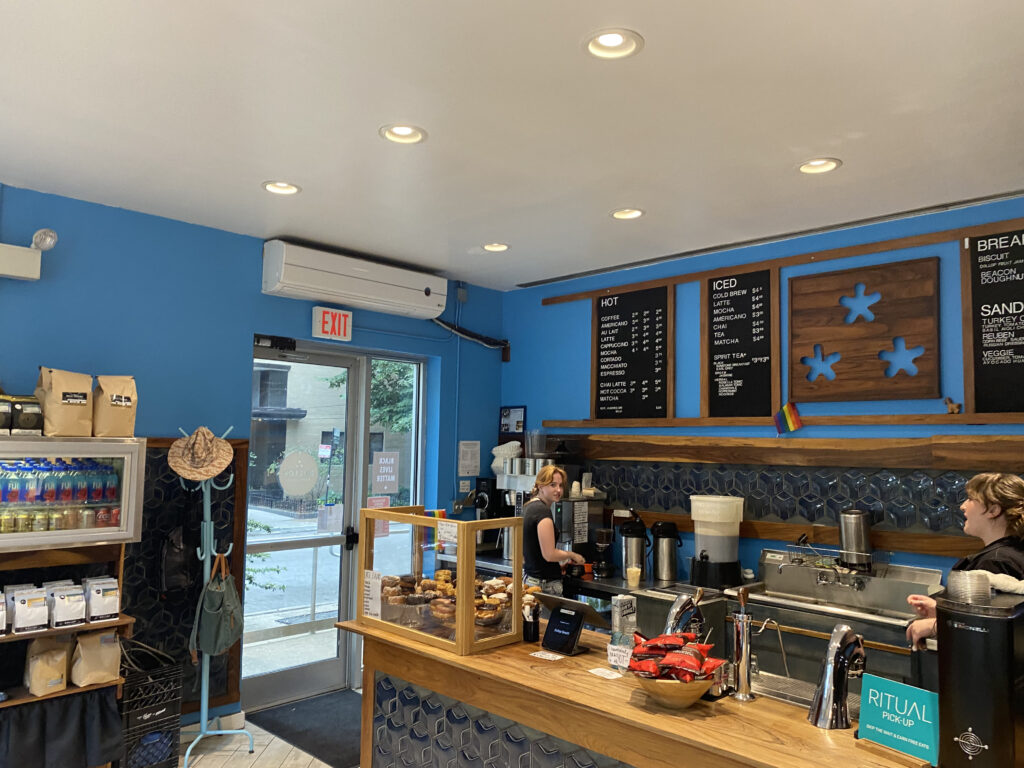
The setting is a key foundation of any story. Without it, your characters are engaging with a plot in an amorphous location. Sometimes, ignoring the setting can lead to dialogue-heavy writing (or “talking head” syndrome). A simple way to ground your story in reality is to use actual places in your writing.
I’ve talked about how traveling to these locations helps add the needed realism to stories based on the real world. However, I also understand that not everyone has the time and money to go to a specific spot in a big city that they don’t live in. It’s certainly easy to use locations close to where you live, but not every story you write will likely be set in an easily accessible spot. Thoroughly researching these places you haven’t been to with Google Maps and travel guides is a simple way to overcome this limitation.
Convey the sensation of “being there”
Ideally, though, visiting the location you want to use in your story helps add details that you just can’t get through internet research. For example, how long does it take to walk to this location (or use other transit options) and will your character be worn out by the time they get there? What does it smell like? Is it stuffy and humid? What common sounds would you hear while you’re there?
Of course, some genres—like fantasy—can’t directly use real-world locations. If a location isn’t 100% necessary to the characters or plot, then merely use an analog from what you know and where you’ve been. Sometimes, the feel of the location is more important and you can use your memories of a similar place you’ve been to and pull the needed senses into your writing. Case in point, the hotel used in Stephen King’s The Shining wasn’t directly the Stanley Hotel in Estes Park, Colorado. Still, the real-world location was a foundation for King to establish the feel of a haunted hotel.
You can’t fool the locals

There are times when—no matter how hard you try, and how much research you do—you can’t get a real-world setting right. It might be disappointing to visit a location you reference in your writing only to find that you got it completely wrong. Ideally, most people won’t care. If it’s some obscure, hole-in-the-wall place in a big city that’s not exactly right, only locals would know the difference between what you describe and what reality is.
For example, I referenced a coffee shop (Dollop Coffee) in my short story, “The Last Immortal” that was not how I described it. I had been to Chicago before, so I knew the feel I was going for and the general area where the main character lived. However, I finally got the chance to visit this small coffee shop years later. I found out that the pictures included in the Google Maps description were all wrong. The information I used to set my scene wasn’t correct to start with. I could have used a Starbucks, which has a pretty consistent layout everywhere, but I wanted that small, out-of-the-way shop to get the feel I wanted. Will anyone know I wrote this coffee shop wrong? Not likely, nor will they care I did.

One thing that sometimes annoys me about books set in places I’m familiar with (especially as a local) is how many things they get wrong. If you’re getting an 85% feel for your location, it’s probably good enough for people who haven’t been there. Alternatively, part of your research (aside from visiting yourself) can be to interview someone who does (or has) lived at the location you want to use. After all, if the goal of your story is to immerse someone in the setting, then you’d better be sure you’re getting it right.
Have you ever noticed an error in a story’s location?
How would you describe the place where you live?
What stories set in real places stuck with you?
